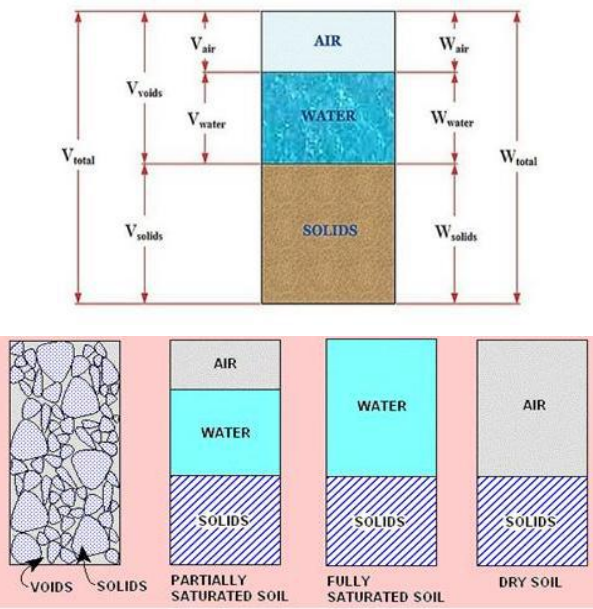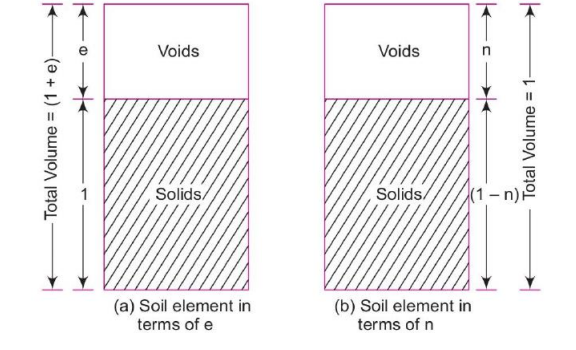
The three phases of soil, or soil solids, water, and air, make up the majority of a typical soil sample. The term “voids” refers to the combination of the sample’s water and air contents.
A sample is referred to as being 100% saturated or purely saturated if the voids are totally filled with water.
A sample is referred to as purely dry if the spaces are entirely filled with air.
On the other hand, a sample is considered wet if some of the spaces are partially filled with water and the rest with air. The graphic illustrates the three-phase system of soil elements in terms of weights and volumes, respectively.
In the figure,
W = weight of the soil sample
WS = Weight of the solids in soil sample, WW = Weight of water in the sample, Wa = Weight of air in the soil sample
V = Total volume of the soil sample, Va = Volume of sir in the sample, Vw = Volume of water in the sample, Vs = Volume of the solids in the sample, VV = Volume of voids in the sample.
Note: –
- In the figure, weight of air (Wa) is assumed to be zero, weight of the voids is equal to theweight of water i.e Ww = WV
- The total weight of the partially and completely saturated soil is W = Ws + Ww whereas,the total weight of completely dry soil is W = Ws
- The total volume of the soil is V = Vv + Vs, where Vv is the volume of voids (Vv = Vw + Va).
- In case of completely saturated and dry soil the volume of voids Vv = Vw and Vv = Va,respectively .
- For (a) Fully Saturated soil (b) For fully dry soil

